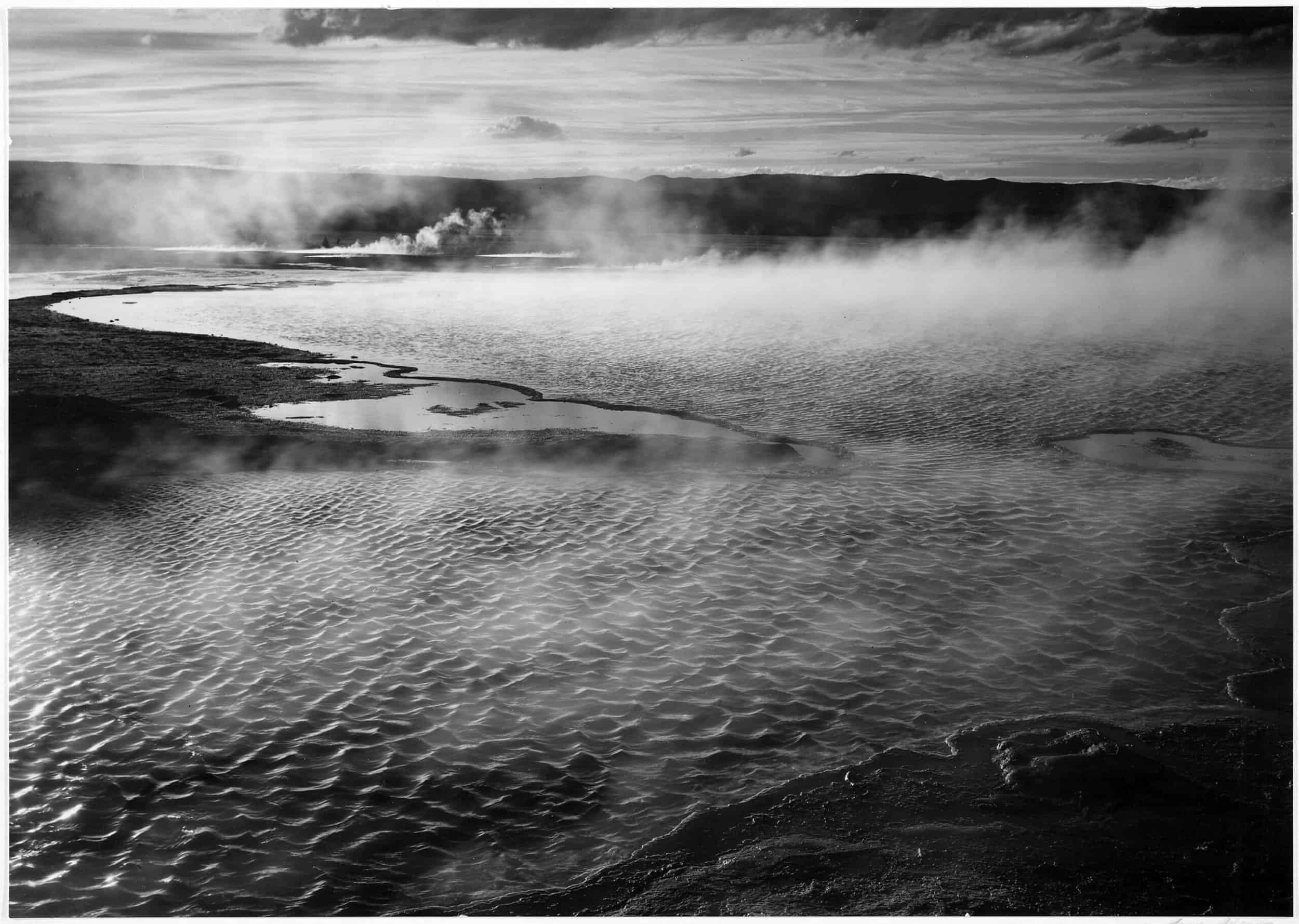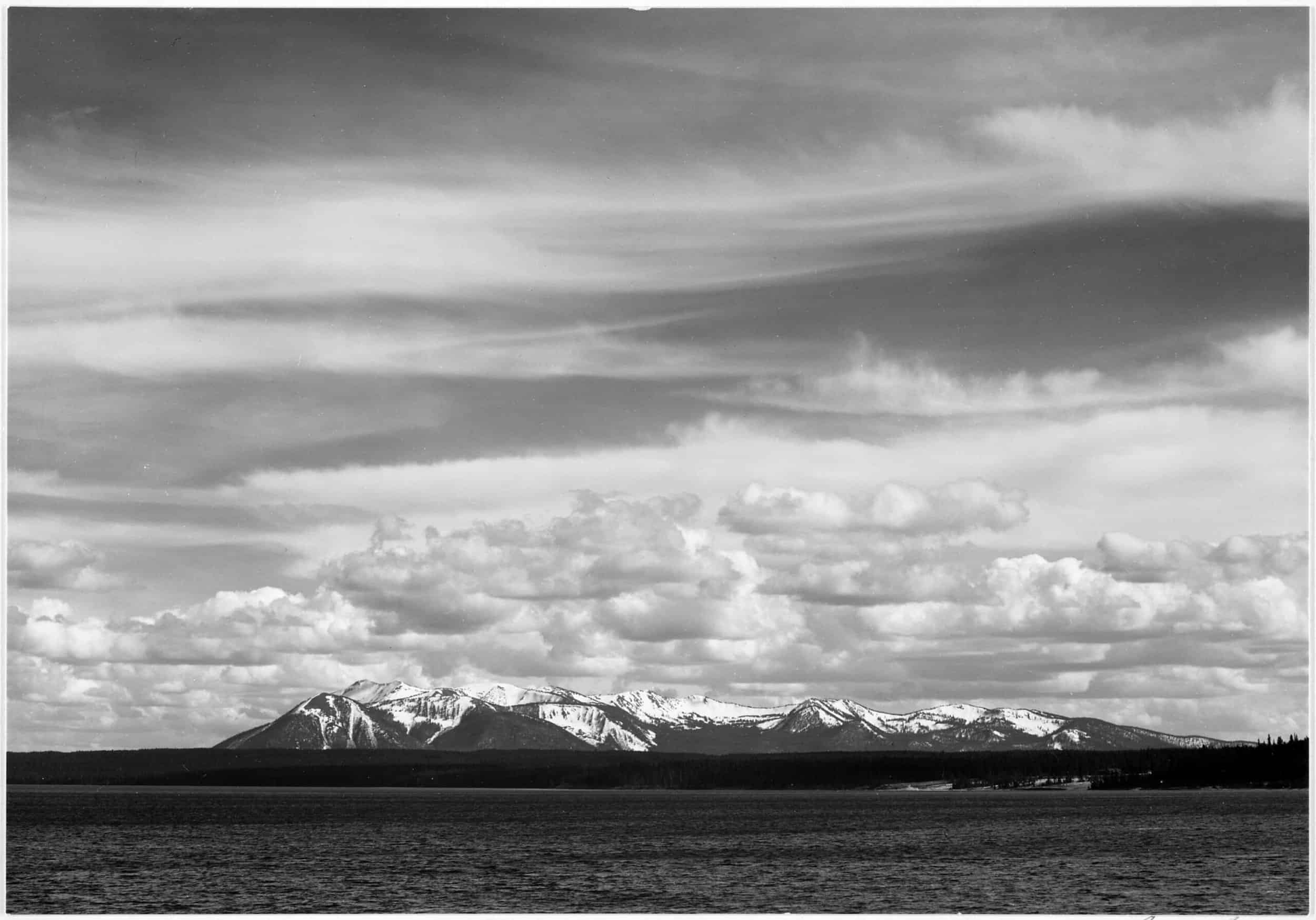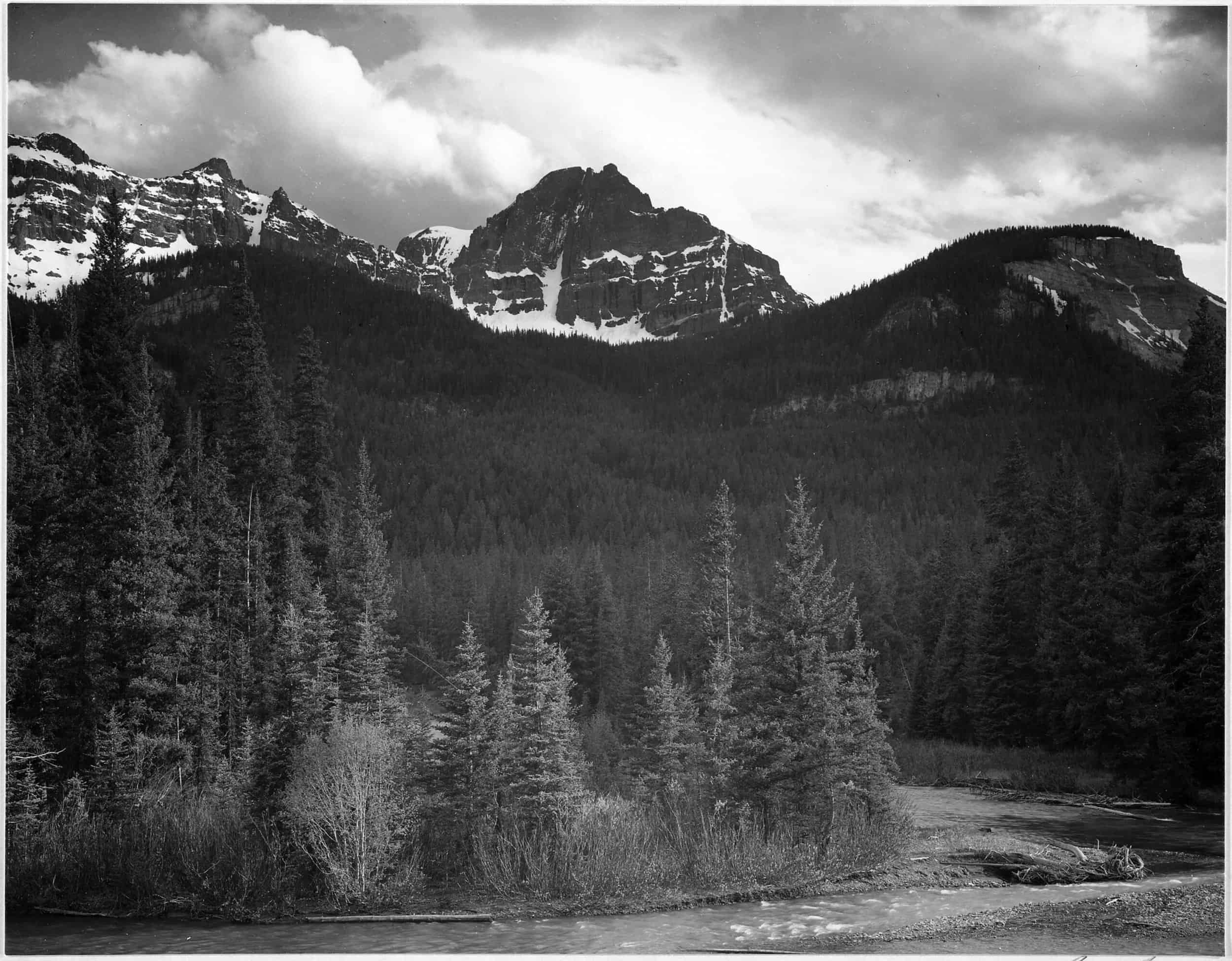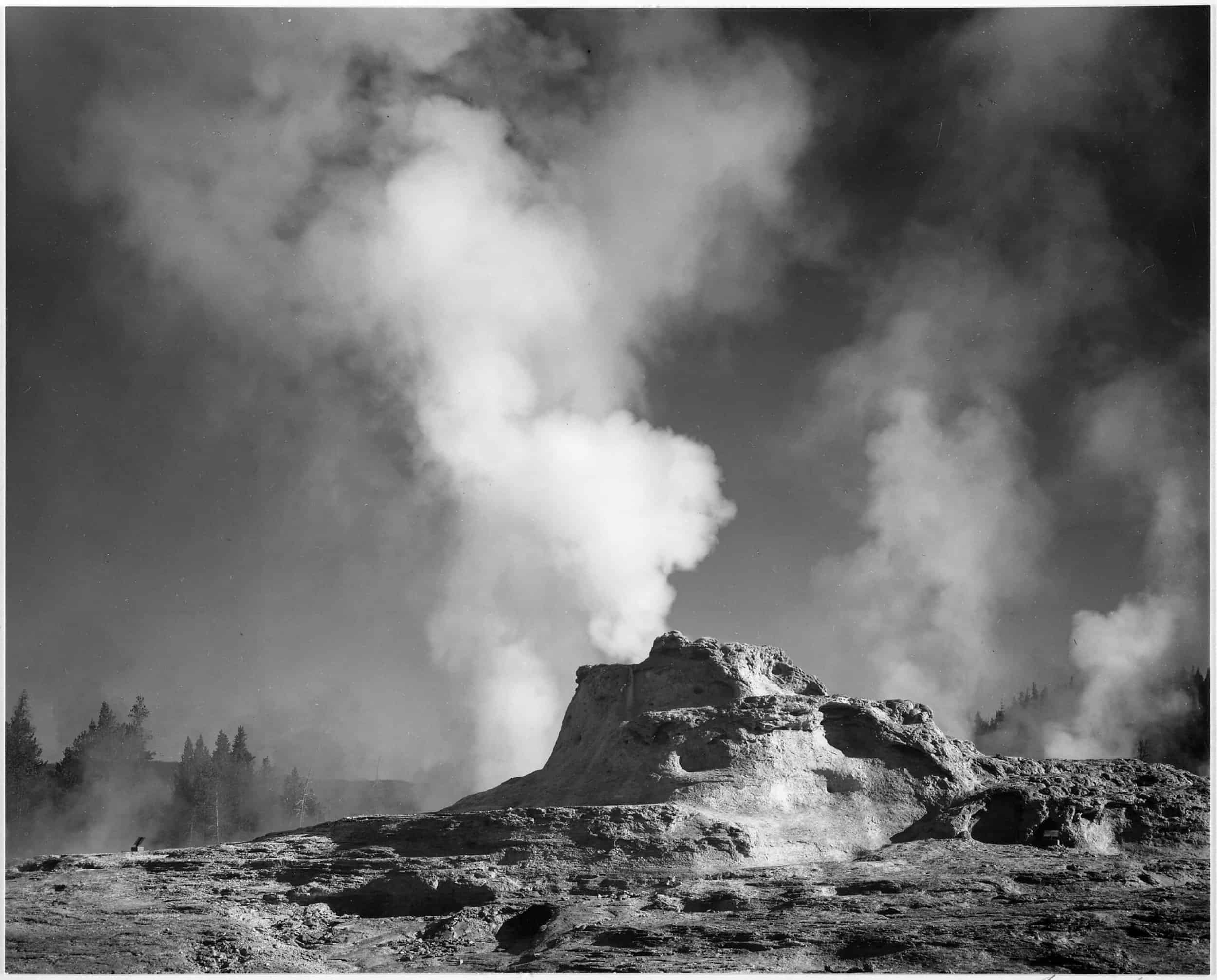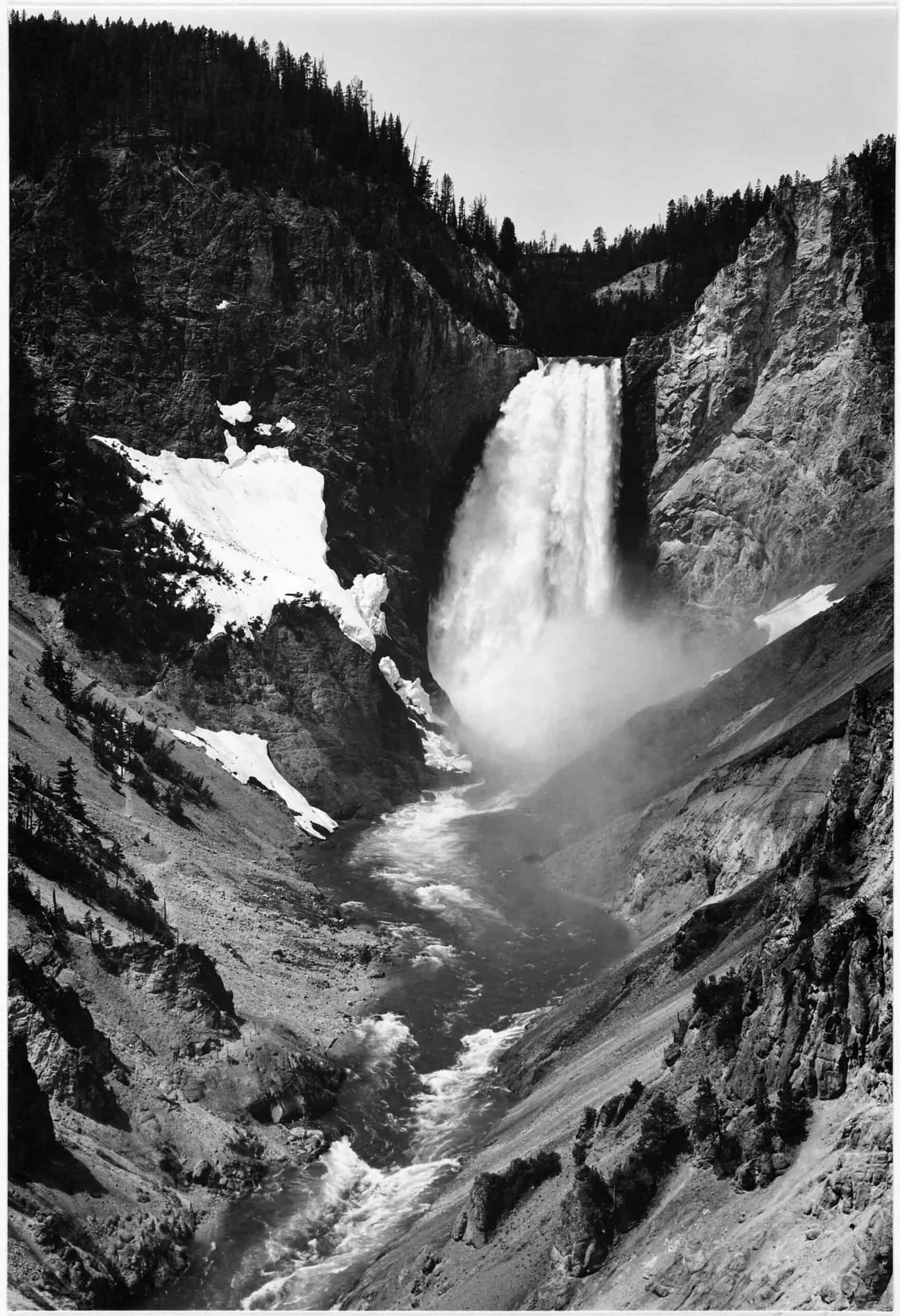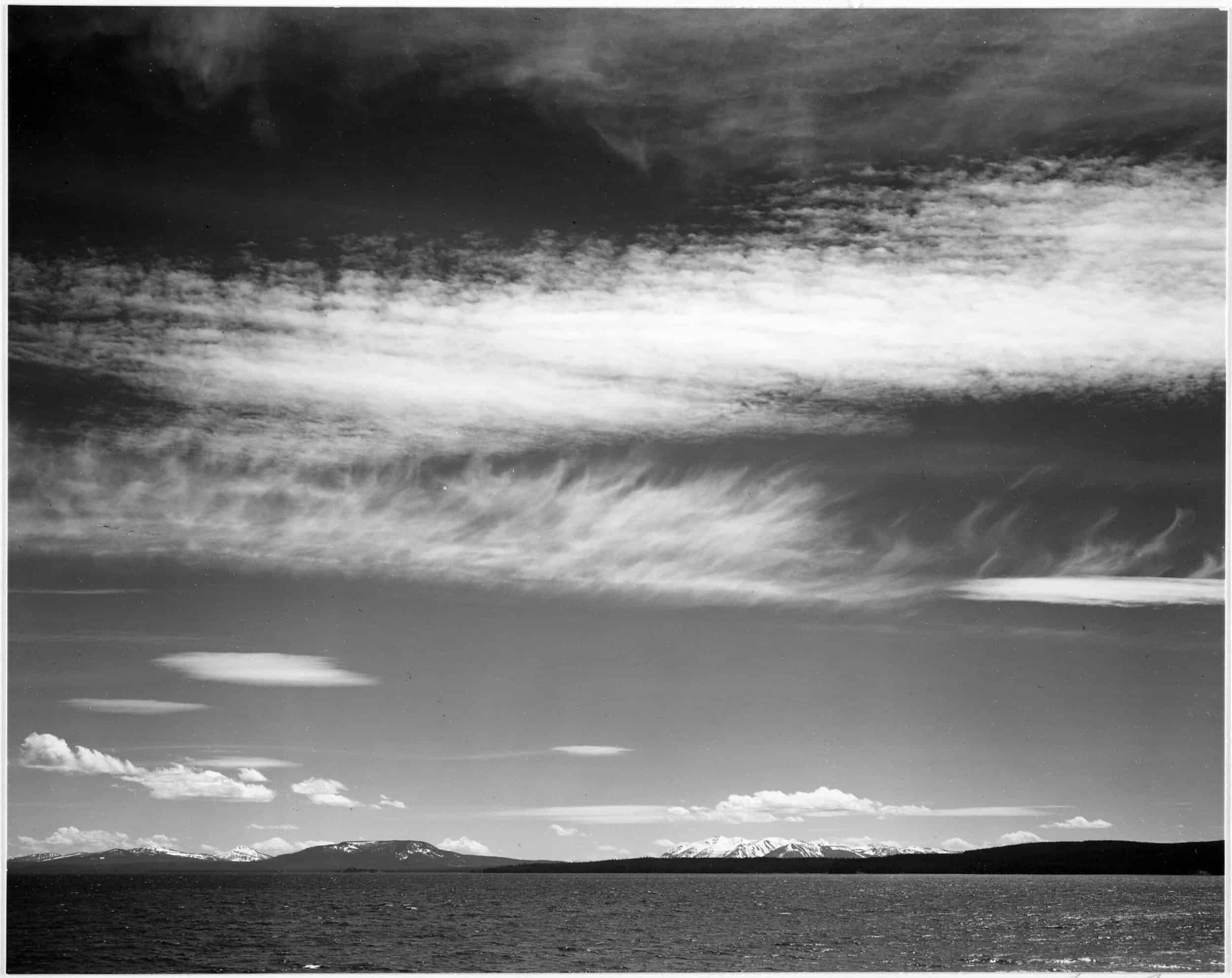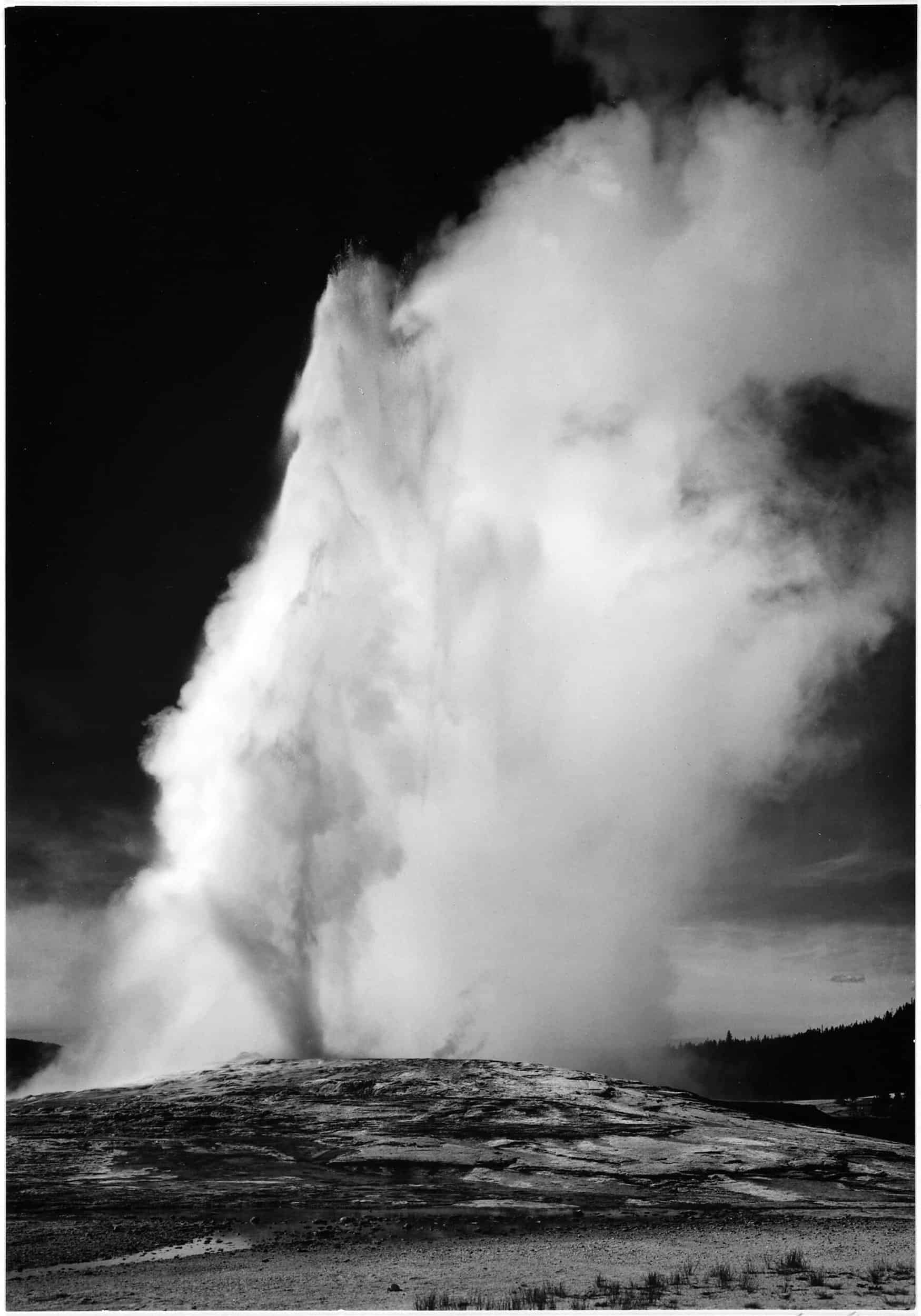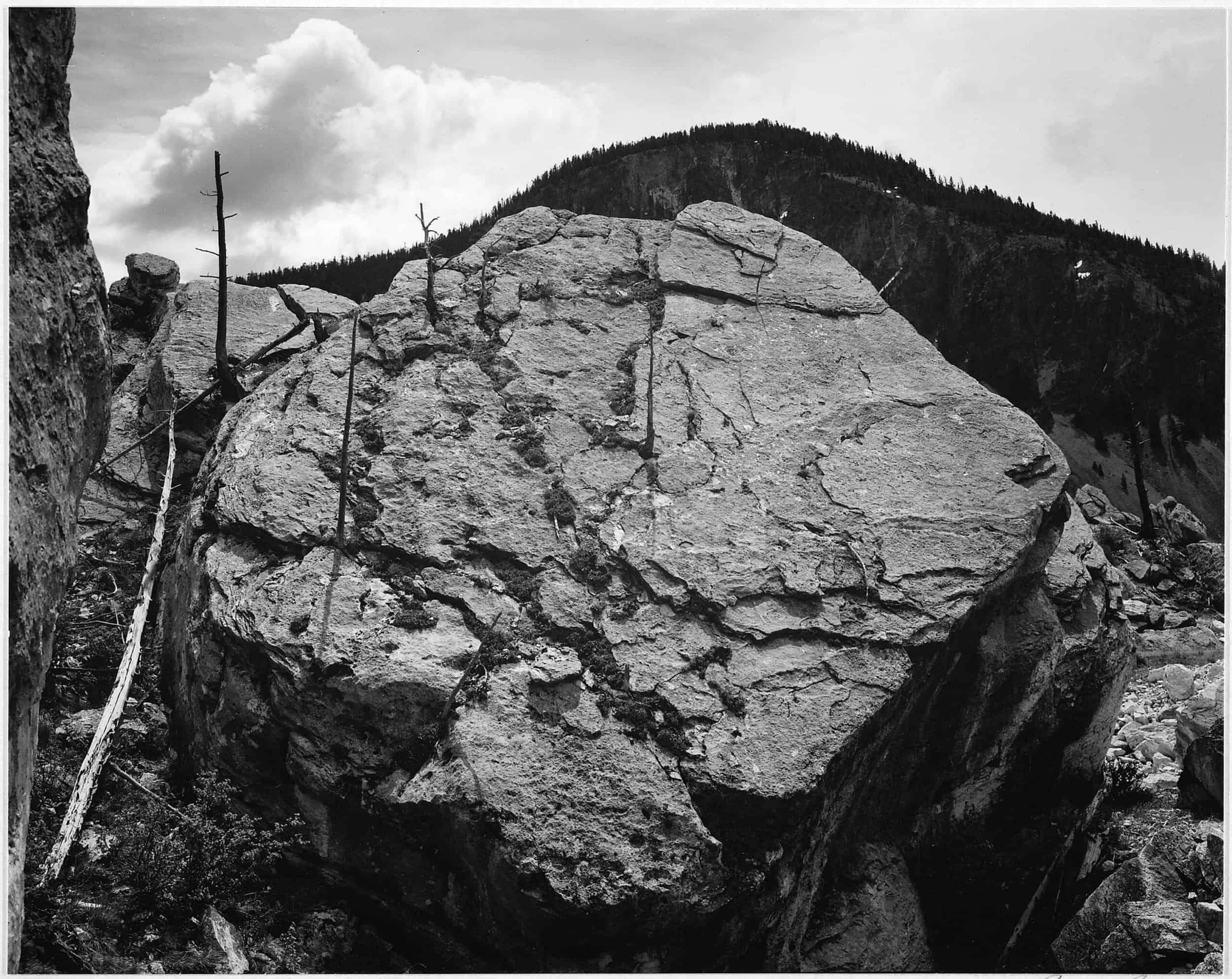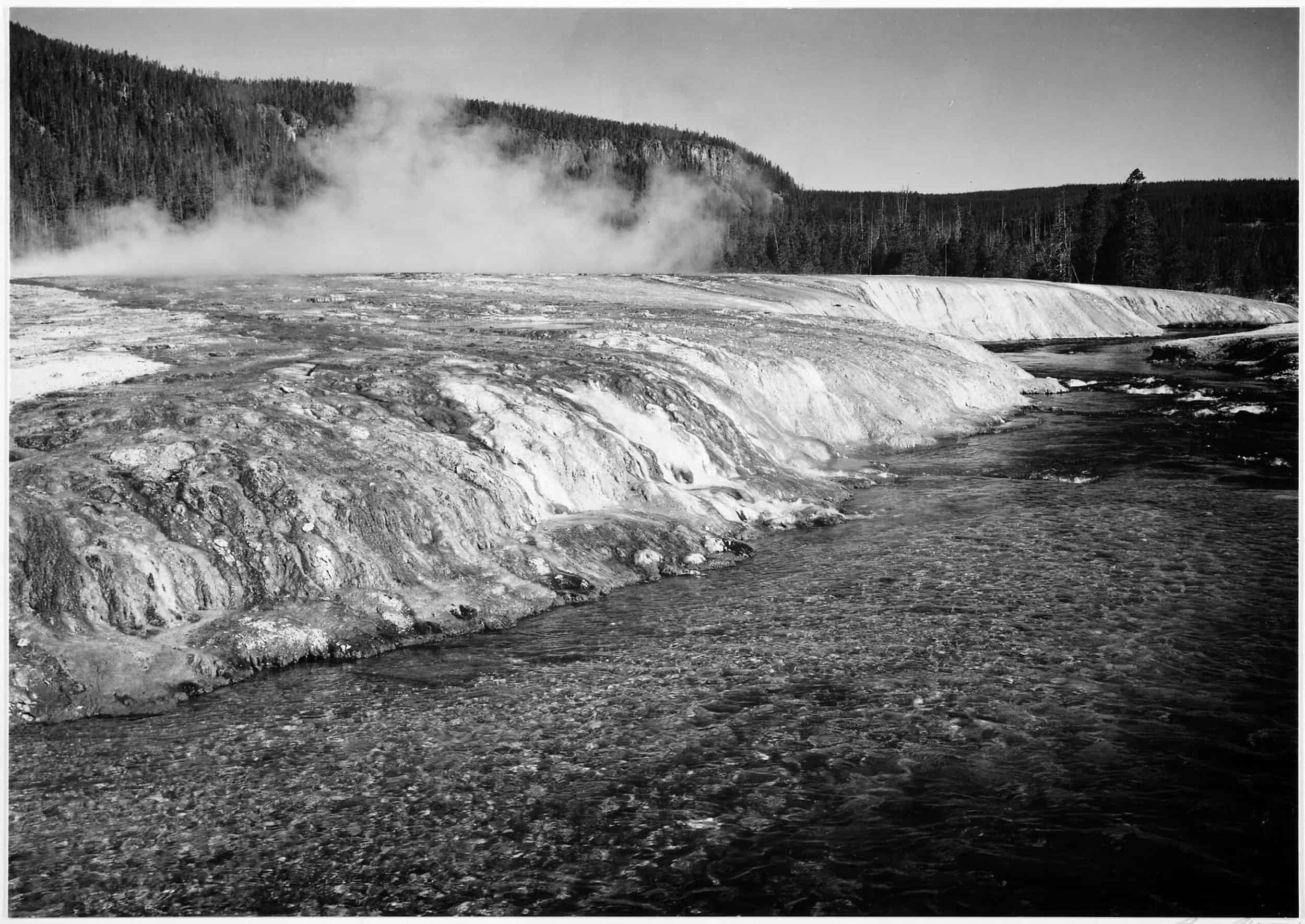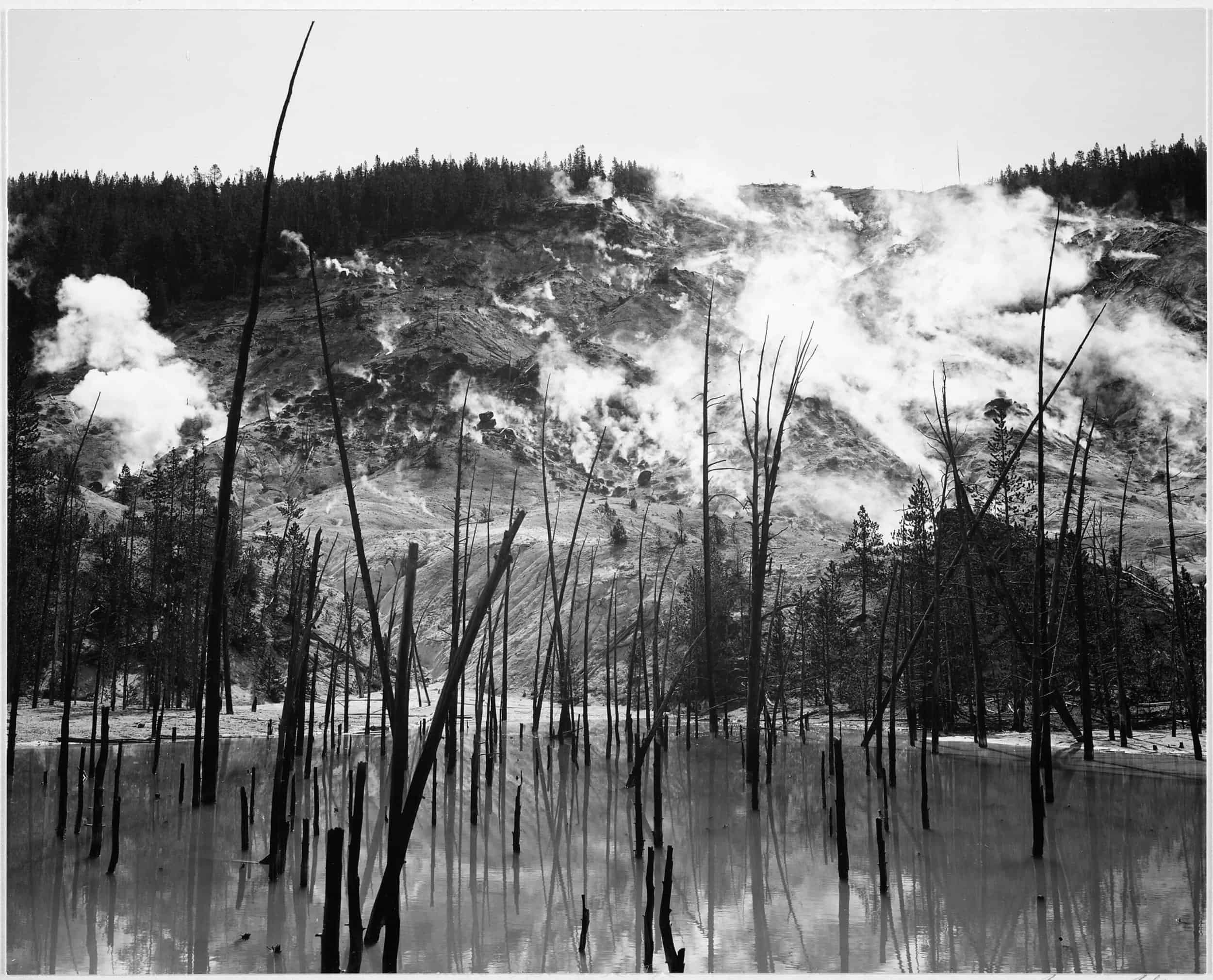Read The
Current Issue
Ansel Adams
// by bradly J. Boner
In the late 1930s, the U.S. Department of the Interior was considering a body of murals to adorn the walls of its newly constructed headquarters, the first building in the nation’s capital to be designed and built by the Roosevelt Administration. The focus of the murals would be historic sites and landscapes preserved in America’s national parks, which are administered by the National Park Service under the umbrella of the Department of the Interior.
Department officials commissioned landscape photographer Ansel Adams, who had already gained renown for his striking black-and-white photographs of the landscapes of the American West, to create the images. Over almost two years from 1941 to 1942, Adams made more than 200 photographs in national parks and monuments including Grand Canyon, Grand Teton, Kings Canyon, Mesa Verde, Yosemite, Carlsbad Caverns, Glacier, and Zion National Parks and Death Valley, Saguaro, and Canyon de Chelly National Monuments. Adams also visited the country’s first national park, Yellowstone, just before the project was halted in the early autumn of 1942 as World War II consumed the nation’s resources.
The Department of the Interior’s collection of Adams murals includes almost 30 images of Yellowstone National Park taken in the summer of 1942, 70 years after the park’s establishment. Adams’s mastery of composition and printing capture landscapes rendered timeless by those determined to preserve them for future generations. Even today, they inspire reverence for these special places and cement Adams’s legacy as an advocate for environmental stewardship.
